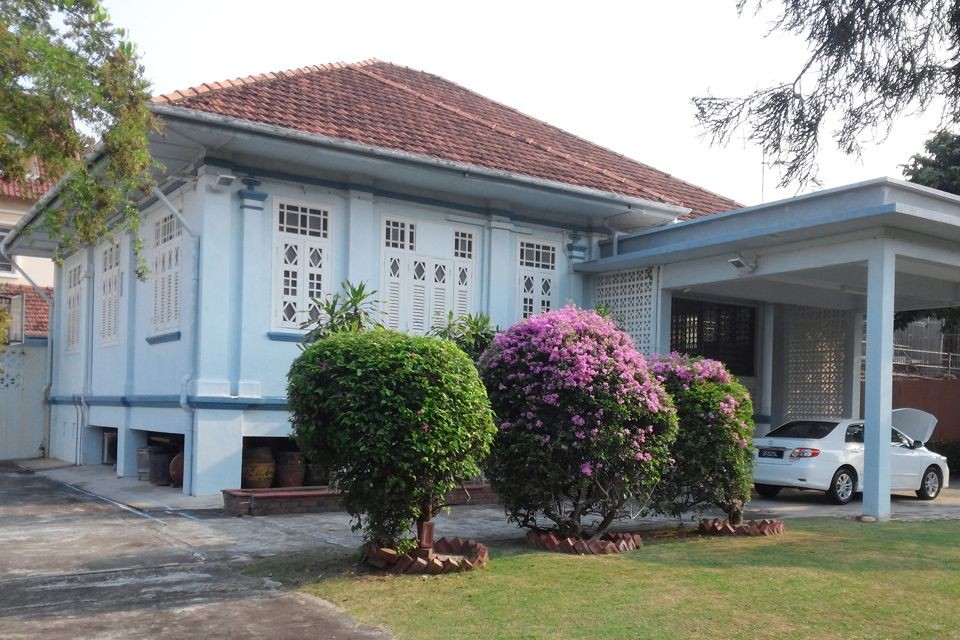WITH the scarcity of land in tiny Singapore, landed homes have long been perceived as one of the most resilient assets with the greatest upside in the local private residential market.
However, the need for steady population growth has also given rise to the likelihood of a denser Singapore, to ensure the country remains economically viable.
The supply of landed homes has been limited. From Q4 2008 to Q2 2018, the total stock of landed homes rose 6.4 per cent, from 68,761 units to 73,150 units. Yet, the total stock of non-landed homes went up by about 70 per cent from 172,443 units to 293,593 units over the same period.
With a lack of a strong supply of landed homes, it appears that prices of landed homes tend to trend up more than prices of non-landed homes during an upswing in prices. The Urban Redevelopment Authority's (URA) residential price index for landed homes rose 87.7 per cent during the upswing from Q2 2009 to Q3 2013, while prices of non-landed homes appreciated 56.2 per cent over the same period.
That said, such properties are rarely available in the down market because their owners are likely to hold prices till the next upcycle, unless there is an urgent need to sell. This holds true particularly for choice properties in prime districts, where well-heeled owners have deeper pockets and can afford a longer waiting time till the next upcycle. Nevertheless, buyers can turn to auctions to seek a wider range of reasonably-priced opportunities.
The prospect of prices continuing to decline may lead some potential buyers to adopt a wait-and-see approach in the hope of clinching a property when prices bottom. However, there is no guarantee they will be able to do that.
Despite the cooling measures, key hot spots are likely to remain favourable among prospective homebuyers and investors.
Based on caveats data on URA Realis on the volume of landed housing transactions in the first seven months of this year, District 19 (Serangoon Garden, Hougang and Punggol) recorded the highest number of deals, followed by District 15 (Katong, Joo Chiat and Amber Road).
Among transactions of terrace homes and semi-detached homes, District 19 similarly topped the charts while the market for detached homes was most active in District 15. More recently, private landed housing enclaves in both Districts 15 and 19 have benefited from heightened interest in non-landed projects and the prospect of new developments in the surrounding vicinity. Landed homes in Serangoon Garden, for example, are among those that have benefited from anticipated growth of the Bidadari area.
In the first seven months of 2018, landed homes in prime districts 10 and 11 were also popular. However, the ratio of the number of landed homes sold to the stock of landed homes in these two districts is lower than that for other districts.
Many owners have shown a preference for a longer waiting period for better offers, should there be no change to their demographic profiles.
Investors seeking to purchase landed properties should focus on potential upside in terms of capital appreciation, rather than yields, which are pretty low.
We compared the prices of the same landed properties that were transacted in 2009 and 2018, and looking purely at price appreciation, we found that freehold detached properties in District 11 posted the highest compounded annual growth rate (CAGR).
Narrowing down to the 2013 to 2018 period, we found that the CAGR for larger freehold landed homes was higher than that of their smaller leasehold counterparts.
This suggests stickier asking prices for landed properties with freehold tenure and in prime districts, with sellers resisting any potential losses, unless they were unable to hold out further.
In contrast, net rental yields for the landed homes in prime districts can be sub-1 per cent in some instances - signficantly lower than the 2 to 3 per cent for mass-market condos.
Nevertheless, the rental market for landed homes has been active, and has placed owners on a safe trajectory to cashing out. Expatriates and Singaporeans alike continue to be attracted to landed homes, especially in the central areas, with homes in Districts 10 and 11 consistently recording the highest rents over the years.
Interestingly, landed homes in outlying areas, such as quaint and quiet neighbourhoods near Sembawang Park, enjoy leasing demand from companies who let their staff use the premises for leisure time with their families.
There is also a unique group of buyers who seek landed homes that are dilapidated, thereby requiring substantial redevelopment. Typically sold below S$800 per square foot of land area, the prices are reflective of only the value of the land.
Even with new cooling measures in place, sellers have to review their housing according to the stages of their life cycle.
Landed homes are harder to maintain, especially for ageing owners, prompting some of them to divest their landed properties and move into condominium developments that offer ready facilities as well as security features.
This creates opportunities for younger buyers aspiring to own a landed home to enter this market segment, which has a more limited supply pipeline.
The appeal of landed homes is set to grow, given that they are emblematic of the pinnacle of the housing ladder for most Singaporeans. Prices continue to be supported by limited supply; that said, locational attributes and timing will still play an important part in the decision-making process for buyers.
Lee Nai Jia is senior director and head of research at Knight Frank Singapore.

